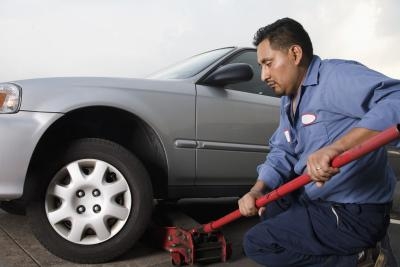
Holes, dents, scratches and dings can all be fixed relatively inexpensively with an auto body filler such as Bondo. It is important, however, to use auto body filler properly if these repairs are going to last and blend seamlessly with the rest of the vehicle. A few key tips should make auto body filler easier to work with and help to generate repairs that will last.
Choosing the right type of filler can make auto body repairs much easier and provide quality finished results. Standard grade auto body fillers work well when filling in small dents and blending small creases. This filler dries within 30 minutes and is easy to sand. Standard grade filler is not appropriate, however, for car bodies made of galvanized steel or SMC. Medium grade fillers are recommended for these body types and for filling small holes, cracks and tears in fiberglass. Medium grade filler is available as a polyester spray that works well for small scratches that cover a large surface area. Premium grade fillers offer the best adhesion, are easiest to sand and are superior when stain resistance is needed.
It is important to mix auto body filler properly, as adding too much hardener can cause problems. It is very important to follow the specific directions for the particular filler being used. As a general rule, however, Reed Overson of Roadsters.com recommends that hardener make up no more than three percent of the auto body filler. Air bubbles should be avoided when mixing hardener into the filler.
Auto body filler should always be applied in thin layers. According to Roadsters.com and Auto Restoration 101, these layers should not be more than 1/4 to 3/8 of an inch thick. Auto body filler applied too thickly contains air pockets that are very difficult to remove. Thick filler application can also concentrate heat from the filler's chemical reaction and cause crystallization, which will make the patch brittle, leading to cracking. It is far better to patch problems using thin layers of filler rather than trying to quickly fill holes and dents with large wads of filler.
Unfortunately, auto body filler is often mixed on cardboard because it is handy and disposable. This is not a good practice, however. Cardboard can soak up some of the resins in the auto body filler and make it less effective. It is also possible that the cardboard has already soaked up something that might affect the way the auto body filler will work. Armor-All, for example, when mixed into auto body filler will cause it to peel back off of the car when it is dry. Plexiglas and old automobile glass make far better auto body filler preparation surfaces than cardboard.